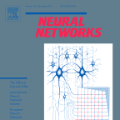In the Edge Inference (EI) paradigm, where a Deep Neural Network (DNN) is split across the transceivers to wirelessly communicate goal-defined features in solving a computational task, the wireless medium has been commonly treated as a source of noise. In this paper, motivated by the emerging technologies of Reconfigurable Intelligent Surfaces (RISs) and Stacked Intelligent Metasurfaces (SIM) that offer programmable propagation of wireless signals, either through controllable reflections or diffractions, we optimize the RIS/SIM-enabled smart wireless environment as a means of over-the-air computing, resembling the operations of DNN layers. We propose a framework of Metasurfaces-Integrated Neural Networks (MINNs) for EI, presenting its modeling, training through a backpropagation variation for fading channels, and deployment aspects. The overall end-to-end DNN architecture is general enough to admit RIS and SIM devices, through controllable reconfiguration before each transmission or fixed configurations after training, while both channel-aware and channel-agnostic transceivers are considered. Our numerical evaluation showcases metasurfaces to be instrumental in performing image classification under link budgets that impede conventional communications or metasurface-free systems. It is demonstrated that our MINN framework can significantly simplify EI requirements, achieving near-optimal performance with $50~$dB lower testing signal-to-noise ratio compared to training, even without transceiver channel knowledge.
翻译:暂无翻译



